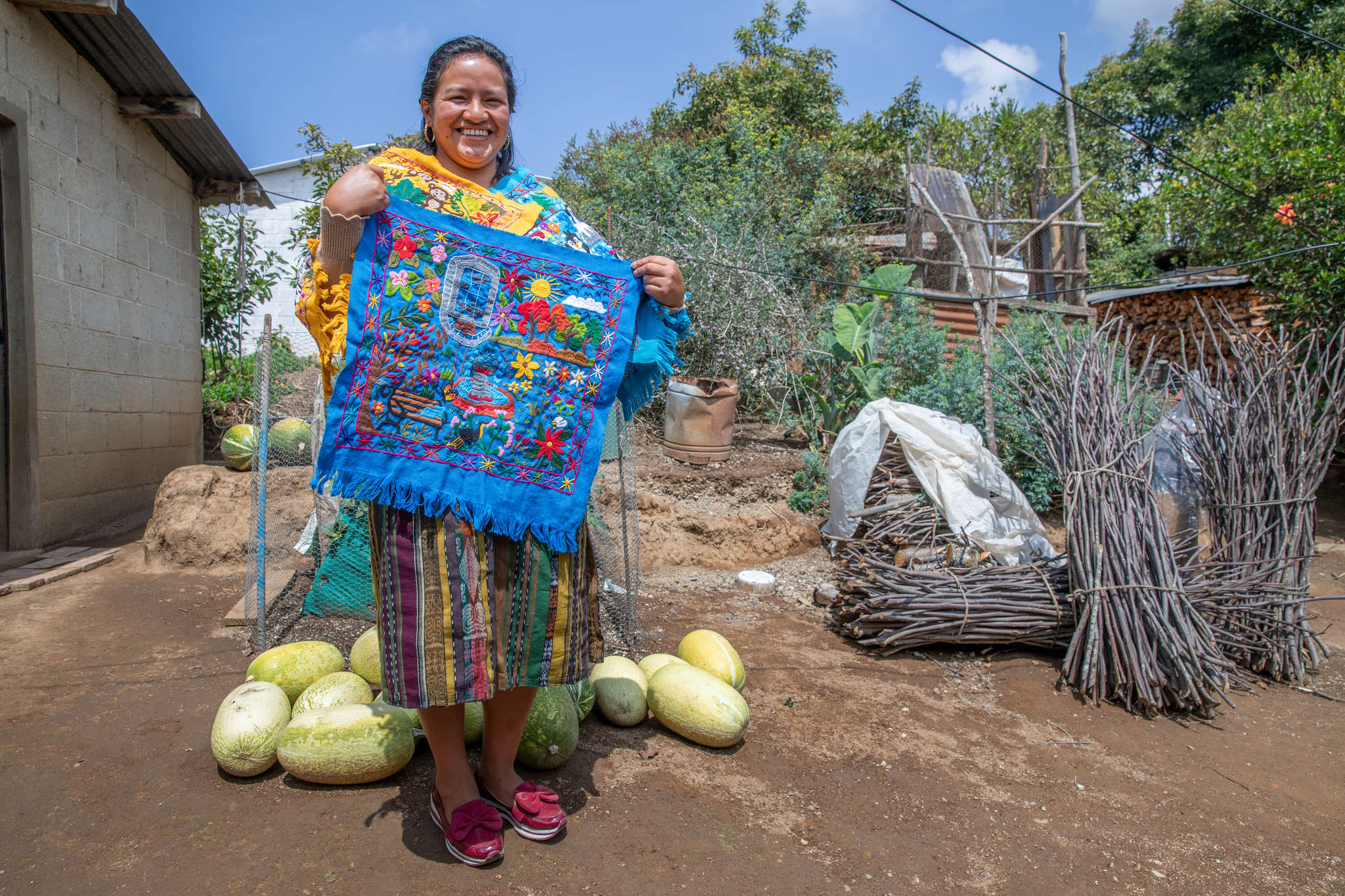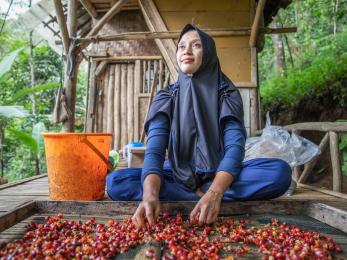Technology connects snow pea farmers to success
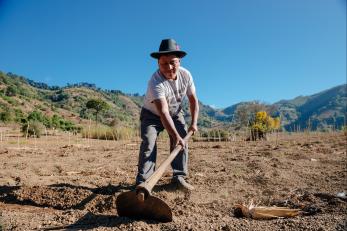
Natalio Simon Alvarez, 54, dresses up more than most people to plant his snow peas — a classic black hat with a feather in it sits atop his head. The volcano at the mouth of the valley where he rents his farmland is awake today, a small plume of ash rising enough to get my attention.
The sight of the volcano is clearly unremarkable to him. He hoists a mesh bag with his seeds and tools over one shoulder and a hoe over the other and sets off into his dusty plot in his leather dress shoes. This is his twelfth year growing snow peas, and they are his most valuable crop.
About 80 percent of the snow peas consumed in the United States are grown in Guatemala. Small farmers like Natalio tend to grow maize and beans to feed their families for part of the year, and then plant a crop like snow peas to sell for extra income.
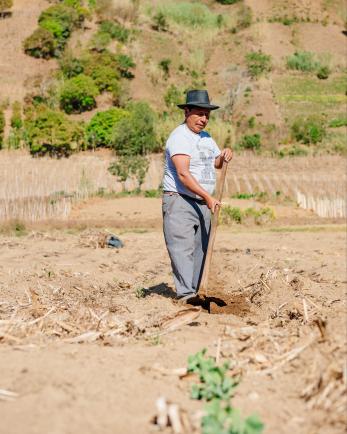
“It’s very important to export,” Natalio tells me, “because we know we can make a good income from that. That’s why we continue to grow.” But new regulations going into effect soon could keep Natalio and other small farmers out of the valuable US market. Mercy Corps is helping them learn new technology to ensure that they don’t lose their livelihoods.
Natalio carefully turns over the soil in his plot, breaking up clumps and forming neat rows in the red earth. When the new rules take effect, any produce imported to the US, including Natalio's snow peas, must be traceable back to the field where it was grown.
Farmers like Natalio are often poor, and many can’t read — because of these challenges, it would be nearly impossible for them to comply with the new regulations on their own. To be shut out of selling their peas in the US would be disastrous for these families.
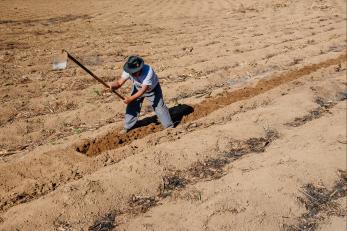
In order to help these farming communities thrive, Mercy Corps has partnered with an exporter to introduce new tracking software, called Farmforce, to the growers.
Today when Natalio finishes planting his snow peas, a guide from his farming cooperative group arrives and puts all the information about the work he’s just done into Natalio’s Farmforce profile on a smartphone. He records what was planted and marks the GPS coordinates. As the peas grow, the software also tracks information about fertilizers and pesticides used.
The data the software gathers is improving the quality of the crop and should reduce the chance of any food-borne illness. “We know that it’s human beings that are going to eat the peas,” Natalio tells me, “so they need to be healthy for them.”
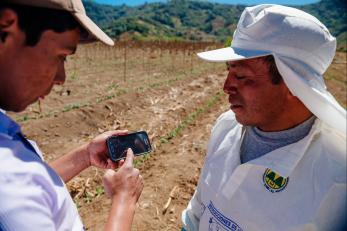
We leave Natalio’s newly-planted plot and return to town to meet Carlos Vicente, 44, another farmer in the same cooperative. We follow Carlos on a steep climb up the volcano. After an hour’s hike on a dusty trail, we get to Carlos’ field — his peas are nearly ready to harvest.
The field perches precariously on the side of the steep hill. We are sweaty and out of breath when we arrive, but the view is worth the effort. Carlos has been growing snow peas for 25 years.
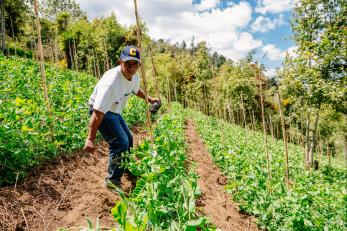
He says that by adopting Farmforce now, he and his neighbors are getting a jump on the competition. “We are the first to implement this. Because we’re having the first trial, when it becomes mandatory we will have the upper hand because we have already learned how to use it.”
Carlos moves comfortably through the steep rows of flowering peas, stringing twine to trellis them, just as I do in my small garden at home. As much as he is at ease here, he says that learning the software was a big challenge at first.
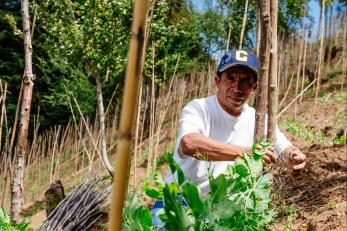
“It’s a new innovation that’s coming in and it was probably more difficult for us because we didn’t have much school,” he says. “But we know that it’s technology and we have to be up to date with it. So even though it was challenging at first, we’re doing better and better.”
To see the next step of the process, we walk past fields where other farmers are harvesting and share the trail back to town with burros hauling 100-pound bags of snow peas.
At the local cooperative, farmers deliver their crop to be weighed and inspected closely to make sure it meets the exporter’s quality requirements. Each harvest is entered into the Farmforce software, and then each farmer’s snow peas are sent to the exporter to be shipped to the US.
I ask Carlos if working this way makes the world seem smaller. He nods. “The communication makes me feel closer.”
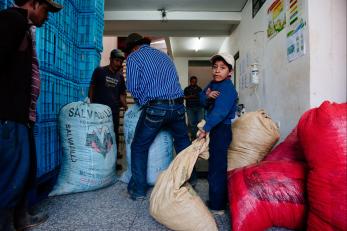
The farmers work together at the cooperative late into the night, making sure each bag of snow peas is marked and processed precisely. Carlos moves hundreds of crates on this evening, each one filled with tender green peas that offer the hope of a better future for the families that grew them.
“My dream is that my kids can do better than I did. That’s why I work so hard,” says the father of four. “As a parent I feel happy because I know I’m doing more for my kids. As a farmer, I have fun when I’m in the field and I don’t feel like it’s a job because I just love doing it. And if you do it with responsibility it’s even better.”
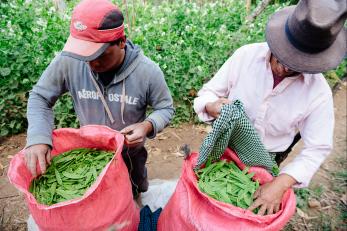
Because of the Farmforce software, Carlos knows that he can keep growing snow peas, earning enough income to give his family a better future.
He’s proud of the way his community and the farming cooperative have risen to the challenge of new technology. “As an organization, we’re doing things together. Whenever we do these things together, we succeed.”
